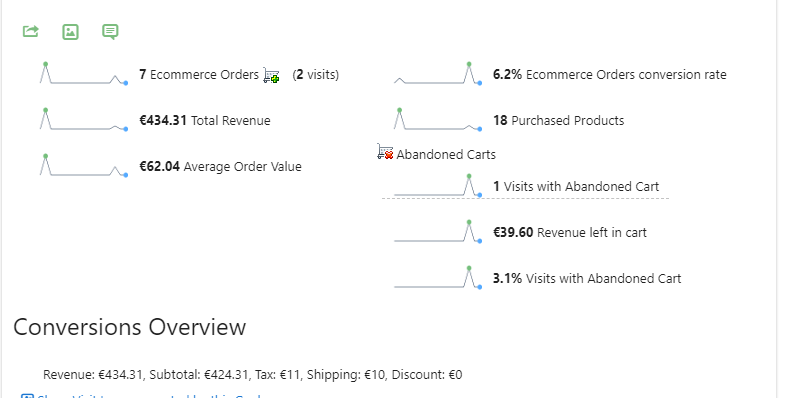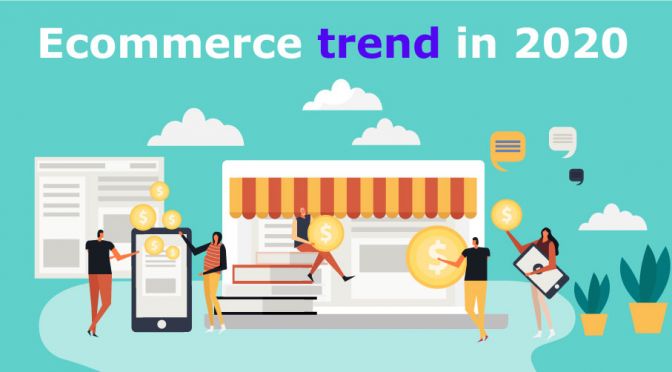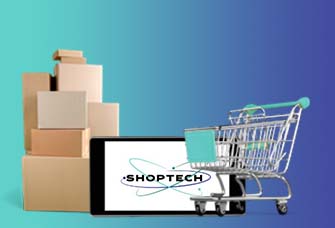The ecommerce industry still has a lot of space to grow. According to data, it only represents around 12% of the total sales around the world. But the good thing is it is consistently getting bigger and bigger every year, and 2020 is not going to be an exception.
As we approach 2020 and what the future holds for digital merchants, it’s crucial to reflect and assess the ecommerce trend that have defined 2019 so far. More and more merchants are boasting omni-channel presences to reach buyers online, offline and on-the-go. Meanwhile, the importance of speedy shipping, social engagement and a lack of hidden fees remain paramount for high-performing retailers online.
But what will define digital merchants after the New Year? Let’s take a look at 5 top ecommerce trend that will only get bigger in 2020.
#1. Massive Influx of Mobile Shoppers
Around 2 billion people will make purchases from a mobile device in 2019, with about 95% of shoppers conducting research from their device prior to completing an in-store or an online checkout. About $1 in every $4 generated in ecommerce comes from mobile, with annual spending exceeding $35 billion.
While mobile’s average conversion rate is just 0.55%, as compared to desktop’s healthier 2.06%, average order value exceeds $100 across all devices (tablets and smartphones). Around 59% of smartphone and tablet users conduct research on their devices, with 59% of them planning to make the final purchase from the same device.
Interestingly, mobile users spend 59% of their time shopping versus closing the sale only 15% of the time, as compared to desktop users, who spend 41% of their time shopping versus closing the sale 85% of the time. So, while mobile shopping is popular, the conversion rate is still largely in favor of the desktop user.
2019 Mobile Ecommerce trend and stats
- 53% of global online traffic comes from mobile devices (Statista)
- 57% U.S. online traffic comes from mobile devices (BrightEdge)
- 200% increase in interactions when mobile devices are used (Google)
- 80% of users will complete sales when sites offer Q/A for mobile users (Google)
- 72% of all digital ad spending will go to mobile this year (Marketingland)
- 68% of companies are now using mobile marketing as a strategy (SalesForce)
- 31% increase in Black Friday sales from mobile year-over-year (Adobe)
- 33% increase in mobile payments by 2021 for an estimated $3.38b (Allied Market Research)
- 32% increase in digital wallet usage from mobile by 2022 (Zion Market Research)
- 71% of mobile purchases come from email influence (Adobe)
- 85% of users begin a sale on one device and complete it on another (Google)
- 52% of mobile shoppers will shop elsewhere after a bad experience (Google)
- 57% of mobile shoppers will abandon the cart if load time is 3 seconds or greater (Google)
- 82% of shoppers browse ecommerce stores from mobile while in-store (Omnicore)
- 62% of shoppers compare prices from mobile devices before buying (LinkedIn)
- $1 trillion in spending offline was influenced by mobile in 2018 (Biznessapps)
- Mobile commerce sales topped $626 billion in 2018 (SmartInsights)
This influx of mobile shoppers also presents new challenges to merchants, though. Considering that traditional desktops still outperform mobile devices when it comes to conversion rates, ecommerce brands clearly need all the help they can get to close sales with mobile users.
#2. The Use of Analytics Data for Ecommerce
Another ecommerce trend that will get bigger in 2020 is store analytics data. Analytics gives marketers valuable insights into the visitors on your website so you can analyse their behaviour and make tweaks to your website that improve your conversion rate and turn website visitors into customers.

Advantages that analytics ecommerce data provides are the following:
Creating a measurement plan for important ecommerce data
Reporting and analysis
Preparing Analysis
Traffic Source analysis
Multi Channel Analysis – Which Channels support people taking the action you want on your website (sale, signup, lead)
Customer Profile Analysis
Enhanced Ecommerce Techniques
On Site Merchandising Analysis
Shopping Behaivour and Analysis
Checkout Analysis
Analytics data provides huge advantages for your online business
#3. Ecommerce Conversion Optimization
Conversions has been a constant ecommerce trend for as long as we can remember, and are the most important metric for any ecommerce business. By increasing your conversion rate, your business will generate more revenue, earn a larger profit at the end of every month, and expand its audience of customers.
The great thing about ecommerce conversion optimization is that small changes often have significant results. A day spent reviewing and updating your website’s category structure, for example, can produce a lasting increase in conversions that drives a huge amount of revenue.
#4. B2B Ecommerce Boom
Although ecommerce is often discussed under the B2C lense, let’s not neglect the steady growth within the B2B community.
Projected to surpass $1 trillion in total sales by 2020, there’s no denying that B2B ecommerce still represents rocky territory for many brands. As merchants continue to iron out the finer details of pricing schemes, bulk shipping and quoting customers, streamlining the purchasing process remains a top priority for B2B ecommerce brands moving forward.
B2B ecommerce will streamline your customer interactions
By enabling the process of ordering be reliable and efficient. This is vital in the current climate of commerce where there are high demand and short time.
Through operation out of the web portal, all ordering may be merged with the ERP (enterprise resource planning) software so that the delay time between dispatch and ordering is negligible.
Mistakes in the ordering process or order fulfillment regarding stock counts that are inaccurate may be prevented since up-to-date counts from your warehouse is integrated into your website, this allows sales agents and customers to always know what is available.
Through the ERP, customers can order online when they want to and the client service can focus on real client service duties instead of being just order takers and the necessity of relay information in independent systems is removed.
More Prevalent Storefront Apps
In a response to the aforementioned challenge of appealing to mobile buyers, expect to see a new wave of mobile “storefront apps” to reach buyers on-the-go. This ecommerce trend goes hand in hand with the need for merchants to have omnichannel presences, as well. Given that mobile users spend 86% of their time within apps versus mobile sites, perhaps branded native smartphone shopping apps are the key to converting those once-fickle customers.
“App commerce” platform Poq recently found that storefront apps outperform mobile web conversion rates by 40%, support longer browsing sessions than even desktop web browsers and are twice as likely to drive repeat visits. This all makes sense given the game-changing functionalities that storefront apps offer, which include superior content personalization opportunities, push notifications and geolocation-integrated brick-and-mortar shopping recommendations.
Defining Ecommerce for 2020 and Beyond
Nobody can truly predict the future in regard to ecommerce. However, these current trends will continue to heavily influence the space for the time being.
Regardless of what merchants might be selling, it’s clear that no shopping brand can afford to rest on its laurels. Just as ecommerce trend is constantly evolving to keep up with the demands and desires of consumers, so should merchants.








